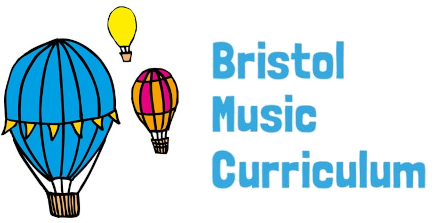Key Learning Objective: To perform and celebrate compositions. Additional Learning Objective: To evaluate aspects of final work in relation to musical learning over the term. Starter activity: Listening and response exercise based on Ravel’s ‘Jeux d’Eau’, discuss how the composer give an impression of water. Main activity: In groups, briefly rehearse the ternary form compositions, using graphic scores […]
Tag: Graphic Score
Year 6, Unit 1: Water – Lesson 3
Key Learning Objective: To explore and recognise a variety of dynamics. Starter activity: Listening and response exercise based on the provided sound clip of waves. Discuss the shape and dynamics created by a wave. Main activity: As a whole class, using percussion instruments, recreate a wave effect with percussion, voices and body percussion. Create a class graphic […]
Year 5, Unit 1: Air – Lesson 4
Key Learning Objective: To combine pitch, dynamics and tempo to create a composition. Starter activity: Listen to twenty seconds of each of the three pieces studied over the previous three weeks, asking pupils to form sentences to describe what they have heard in each using vocabulary learnt so far (pitch, tempo and dynamics.) Main activities: To […]
Year 5, Unit 1: Air – Lesson 2
Key Learning Objective: To organise pitch to create the effect of flight. Starter activity: Listening and response exercise, based on the work ‘Flight of the Bumblebee’ by Rimsky Korsakov written in 1899-1900. Focus on the movement of the pitch and the shape it creates. Record this activity for evidence. Main activities: To be recorded. Activity One: […]
Year 4, Unit 3: Chronology – Lesson 3
Key Learning Objectives: To follow a graphic score To know that staccato means detached. To recognise repeated rhythmic patterns. To compose and perform melodic phrases. Listening focus: Listening and response exercise, based on the work ‘Fossils’ by Camille Saint-Saëns, the twelfth movement of the musical suite ‘Carnival of the Animals’. Main activity: Focus on the rhythm of the main theme, noticing […]
Year 4, Unit 1: Water – Lesson 5
Key Learning Objective: To interpret symbols as musical sounds. Additional Learning Objective: To select instruments and explore the timbre of the instruments in order to represent aspects of a storm. Starter activity: Watch the BBC Ten Pieces film for Benjamin Britten’s ‘The Storm’ from the opera ‘Peter Grimes’. Explain that the class will be using it […]
Year 4, Unit 1: Water – Lesson 4
Key Learning Objective: To interpret symbols as musical sounds. Additional Learning Objective: To select instruments and explore the timbre of the instruments in order to represent aspects of a storm. Starter activity: Watch the BBC Ten Pieces film for Benjamin Britten’s ‘The Storm’ from the opera ‘Peter Grimes’. Explain that the class will be using it […]
Year 3, Unit 1: Air – Lesson 6
Key Learning Objective: To perform and evaluate and complete the Hot Air Balloon composition. Additional Learning Objective: To sing expressively. Starter activity: Rehearse then perform Part one of the ‘Hot Air Balloon song’ with expression. Main activity: Brief rehearsal time with original scores, with a view to performing the final compositions. Plenary: Listen to the final performances […]
Year 3, Unit 1: Air – Lesson 5
Key Learning Objective: To complete composing the soundscape and notate on graphic score. Additional Learning Objective: To choose a location and represent it through notated symbols and with a particular dynamic. Starter activity: Revisit ‘Hot Air Balloon song’, focusing on the direction of the melody. Does it move in steps or leaps? Main activity: Recap […]
Year 3, Unit 1: Air – Lesson 3
Key Learning Objectives: To create a soundscape with an identifiable structure. Starter activity: One group to perform their soundscape from the previous lesson. Response to ask why certain aspects of the performance are not the same as the previous lessons performance. Main activity: Introduce the concept of notation, using the idea of a graphic score to […]
